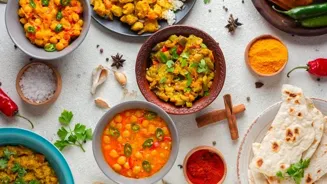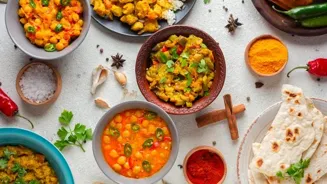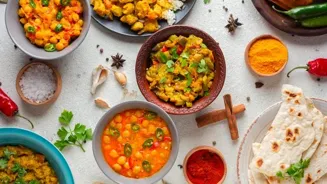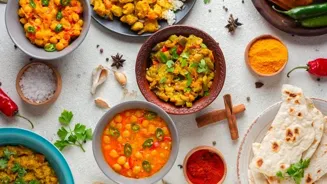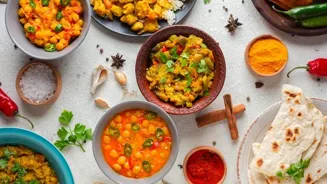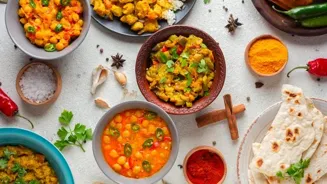Unveiling the Essence of Indian Cooking: Dive into Essential Spices for Flavorful Delights. Enhance your culinary journey now!
India, a land famed for its vibrancy, its colours, and above all, its mouthwatering
cuisine. The magic behind Indian food lies significantly in the artful use of spices. For many home cooks, the sheer variety can seem daunting, but fear not!
Mastering a few essential spices can unlock a world of flavour and transform everyday meals into culinary delights. This article will guide you through the must-have spices in your Indian kitchen, helping you create authentic and delicious vegetarian dishes with confidence.
It's all about beginning with the basics and learning how to blend these spices to create unique flavors in your food which excites the taste buds.
Turmeric: Versatile spice in Indian cuisine, adds color and flavor, known for medicinal properties
Our journey begins with turmeric, also known as haldi in Hindi. This golden spice is a cornerstone of Indian cooking. It is not just about the lovely yellow colour it lends to dishes, but also its mild, earthy flavour. Turmeric is a well-known ingredient to the Indian cuisine.
Often used to add a distinct colour along with mild flavor, every Indian household has turmeric handy at all times. Apart from cooking, it is also known for its various medicinal properties. Haldi doodh, or turmeric milk, is a popular home remedy for cold.
It is a versatile spice which features prominently in dals, vegetarian curries, and rice preparations. Turmeric is often added to hot oil at the start of cooking, allowing its flavor to bloom, or it can be sprinkled towards the end to add a final touch of color and fragrance.
A pinch of turmeric can make any food look tempting and tasty.
Cumin: versatile spice essential in Indian cuisine
Next on our list is cumin, called jeera. These small, brown seeds pack a powerful punch of aromatic and earthy flavour. Cumin is one of the most important ingredient in Indian cuisine, because of its unique strong flavour. Cumin is often used in two forms: as whole seeds and as ground powder.
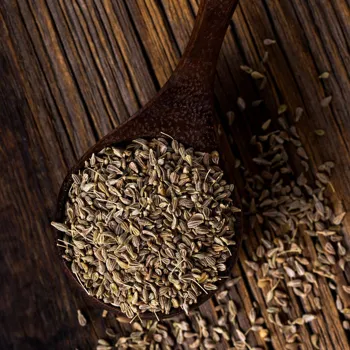
Whole cumin seeds are temperred in oil or ghee at the start of cooking, creating a fragrant base for curries, and dals, or added to other recipes. The roasting of cumin seeds is important, as roasting intensifies their nutty flavor, adding depth to the dish.
Roasted cumin powder, also known as bhuna jeera powder, is used as a finishing touch for raitas, chaats, and other snacks, lending a smoky and warming note. It can also be added in salads and curds to enhance the flavour.
Coriander seeds add citrusy freshness to Indian dishes
Coriander, is called dhania in Hindi. Coriander is a plant that has seeds and those seeds are called as coriander seeds. The seeds are fragrant and are crucial for balance in the dishes cooked in India. Like cumin, coriander comes in both seed and ground forms.
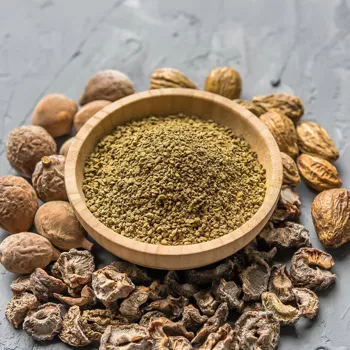
Coriander seeds have a bright, citrusy flavour that adds freshness to curries and vegetable dishes. They are often roasted and ground to release their flavor before being added to the dish. Ground coriander is an essential ingredient in many Indian spice blends.
As coriander is a versatile spice with a mild tang flavor, it mixes with most of the spices in a very easy and quick way and does not take time to mix with any other recipe. It also is frequently used for garnishing to further enhance the attractiveness of the dish.
Indian chili powders vary in heat and flavor; start cautiously
Chili powder, or lal mirch, is a must-have for those who want to add some heat to their food. Indian cuisine offers a wide range of chili powders, varying in heat levels and flavor profiles.
Kashmiri chili powder is known for its vibrant red color and mild heat, making it perfect for dishes where you want the visual appeal without too much spice. Regular chili powder can be used in curries, vegetable dishes, and even snacks like chaat.
Its intensity can differ so it is best to begin cautiously. Keep in mind that you can always add more heat, but it is difficult to remove it once it's already in the dish. If you are somebody which does not like spice, add the chilli powder in very small quantity to only enhance the flavour.
Mustard seeds add unique flavor to South Indian cuisine
Mustard seeds, or rai, are tiny but mighty. These seeds are especially significant in South Indian cooking, but are also important in other regional cuisines. Black mustard seeds are the most common type used in Indian cooking.
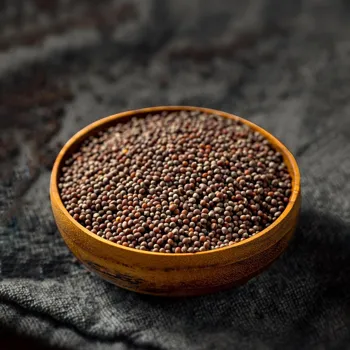
When tempered in hot oil, mustard seeds pop and release an unique, nutty flavour. This tempered oil is then used as a base for dals, vegetable dishes, and chutneys. Mustard seeds add a distinctive flavour to many recipes and is very beneficial to the taste.
It also helps in the digestion and adds a tangy flavour which gets the taste buds excited. It is very popularly used in many South Indian dishes.
Garam masala: essential blend in Indian cuisine for warmth and flavor
Lastly, we come to garam masala, which is Hindi for 'warm spice'. This is not a single spice, but a blend of several ground spices, typically including cardamom, cinnamon, cloves, cumin, coriander, and black pepper.
The combination and proportions of spices differ, which means that every family has their own garam masala recipe, which is unique. Garam masala is usually added towards the end of cooking to retain its fragrance and flavour.
Sprinkling a pinch of garam masala over a finished dish adds a layer of warmth and complexity, which is what makes Indian food taste more enticing. It helps in the digestion of the food as well. Without Garam Masala, it can be said that Indian cuisine is incomplete.
AI Generated Content. Glance/InMobi shall have no liability for the content